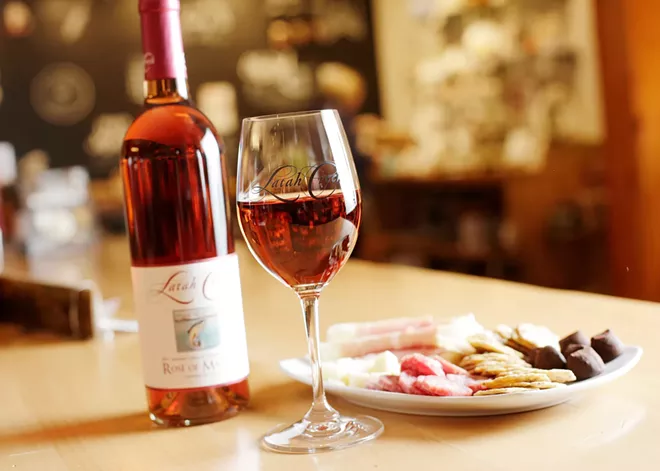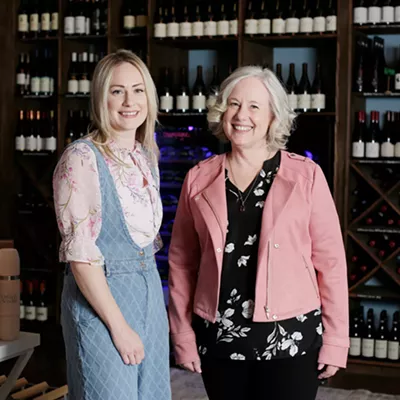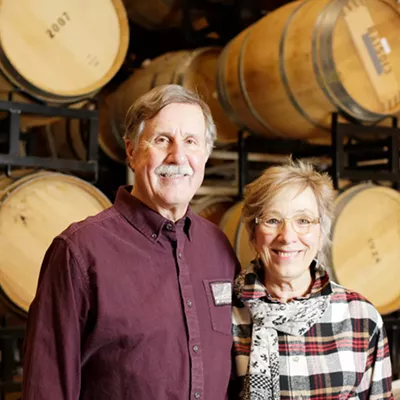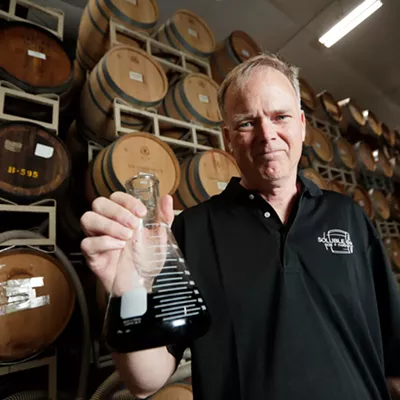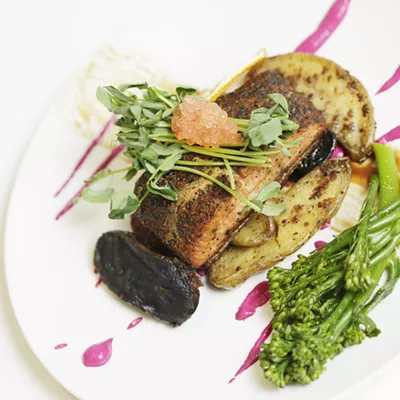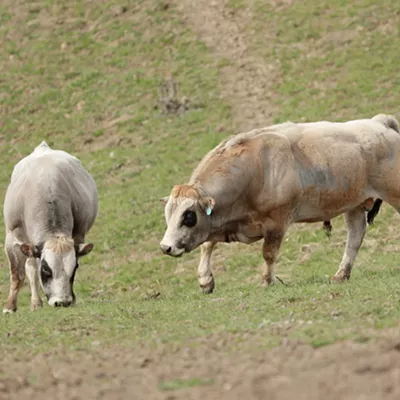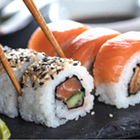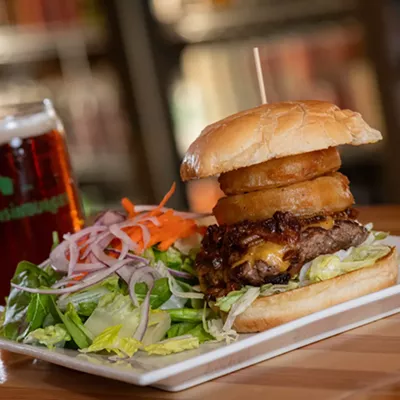A smile crosses the face of Chuck Reininger, the founder of Reininger Winery and Helix Wines in Walla Walla, when asked to describe the rosé style of wine.
"Rosé, to me, is always delightful," he says. "It's beautiful. It's sexy. It can be all those things."
Bartender, a round for the house!
"I think most people think of rosé as a summertime wine," says Natalie Conway-Barnes, co-winemaker with her father, Mike Conway, at Latah Creek Wine Cellars in Spokane Valley. "We definitely market it that way at the beginning of summer. But it pairs so well with whatever you're having all year long."
That may well be rosé's superpower, as selecting the wine or even several wines to serve with the multiple-dish Thanksgiving meal has long been a thankless task.
Food and wine pairing is mostly about flavors. Growing up in her family's winery, Conway-Barnes initially was taught to pay attention to flavors by her mother, Ellena.
"Mom would cut an apple and pour a little bit of riesling into a glass," she recalls. "She'd tell me to take a bite of apple and then taste the wine, and I could taste the apple flavor in the wine. That really was the beginning of my wine education, and it's why riesling has always been near and dear to my heart."
Years later, she would discover her true vinous love.
"So many wines you buy in the supermarket have similar characteristics and flavors because they're made with various combinations of the Bordeaux varietals — primarily cabernet sauvignon and merlot," she observes. "Then I tasted a tempranillo and it threw me off. The whole flavor profile was different. It was unique. It was the first time I really had a vision of what wine tasted like, and I loved it."
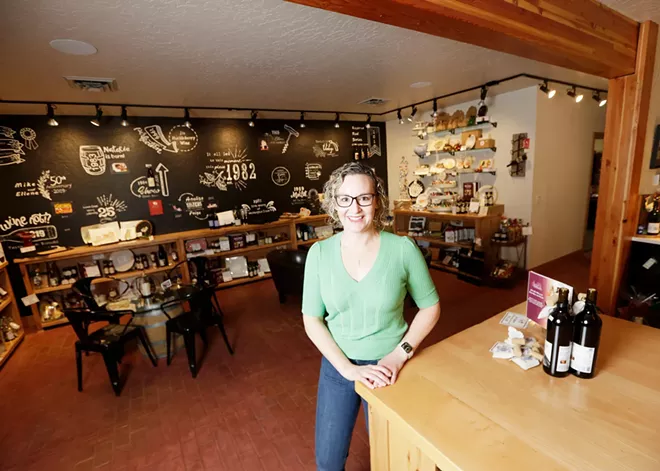
While it might be said that winemaking is in the Conway family DNA, the wine-bug didn't afflict Reininger until after he married. Originally, he had visions of starting a brewery, but after moving from the Seattle area to Walla Walla with his wife, Tracy, Reininger began making wine at home.
"I absolutely fell in love with it," he says, adding that a big part of it had to do with his experience as a climbing guide on Mount Rainier.
"That gave me an interest in geology," he explains. "The vine is the umbilical cord between the soils and the wines. What was intriguing about it to me was that I could sit at the dinner table and ponder where the wine came from — the geology of it.
"It evoked the same feelings in me of why I would climb — being in awe of the incredible sources that created our world," he adds. "With climbing, I get a view from above. Wine gives me a view from below."
That respect for things he cannot control informs Reininger's approach to winemaking.
"I'm not trying to make a similar profile year after year, although I do have preferences," he says. "I like to say that I make wine for myself, and if there's enough left over, I share it with everyone else. I just try not to get in Mother Nature's way. I try to be a good steward of the land. Grapes will turn into wine eventually if you leave them alone; winemakers just slow the process."
Similarly, Conway-Barnes understands that the most memorable wines are largely allowed to happen, rather than being manipulated.
"Mother Nature always takes a unique path," she notes. "With riesling, one year you might get a Granny Smith [apple] flavor, while another year you might have pear in there. You have to allow each wine to shine. With reds, we can use oak to balance out the flavors, but I want you to taste the fruit first. With our rosé, like all the wines, I want the vintage to dictate."
There are four basic ways to make a rosé wine: maceration, saignée, direct press and blending. Entire books have been written about the processes, but it ultimately boils down to an individual winemaker's preferences and how they envision the finished product.
"I like to say that I make wine for myself, and if there's enough left over, I share it with everyone else."
Early on, Reininger says he experimented with the saignée method — removing the juice from a tank of fermenting grapes and then fermenting the juice separately — but didn't like the relatively high alcohol level in the wine, which he likened to "fire water." It was after a visit to the Chianti Classico region in Italy's Tuscan hills, where he experienced Rosato Classico wines for the first time, that he decided to make "a real rosé."
For him, that equated with "making the wine in the vineyard," and managing the vines differently than sangiovese vines intended for making red wine.
"We're basically looking at slightly higher yields and higher acidity in the grapes — not bracing, but higher," he explains. "To get the level we want, it typically means picking the grapes earlier. You need to make sure the greenness has grown out of the grapes, and then you keep a close eye on the fruit."
Helix Wines sources its sangiovese grapes from the Stillwater Creek Vineyard in Washington's Royal Slope viticultural area, about 5 miles north of Royal City.
The evolution of Latah Creek's rosé program has included a sangiovese as well as a blend of red and white varietals. Today, the Latah Creek rosé is crafted from malbec grapes grown in the Famiglia Vineyard in the Ancient Lakes American Viticultural Area (AVA) in Central Washington.
"I chose malbec because of its intense fruit flavors," Conway-Barnes explains. "You get some unique flavors, like watermelon, that you're not going to taste in red malbec."
Exceptional rosés can be made from almost any red grape variety. Icicle Ridge Winery in Leavenworth and Coeur d'Alene Cellars, for example, both use pinot noir fruit. Rosemary Manor in Post Falls makes a dry rosé from cabernet sauvignon grapes and a sweet rendition from syrah. Pend d'Oreille Winery in Sandpoint also makes a syrah rosé. Even hybrid grapes can be used, as demonstrated by the Marechal Foch rosé made at Skimmerhorn Winery and Vineyard in Creston, B.C.
The French have known of rosé's food affinity for generations. When visiting Lyon, the city that natives consider the country's culinary capital, you'll witness hardly any white wine being consumed, some red, and a whole lot of rosé — whether it's in a boulangerie where the chef can be seen through a kitchen window ladling oodles and oodles of cream into a pot to create a decadent mushroom ravioli or in a café serving croque monsieur and a simple green salad.
That versatility makes rosé the perfect antidote to a Thanksgiving wine headache. ♦

